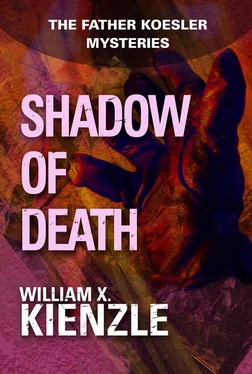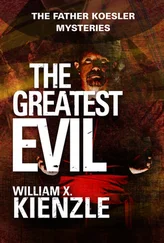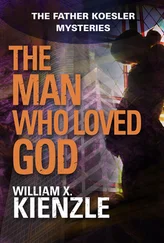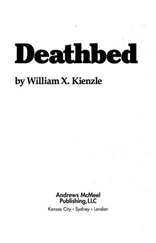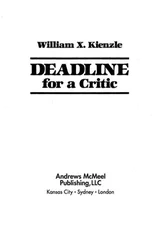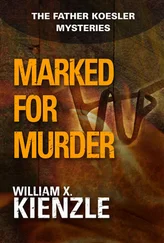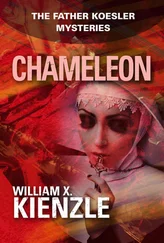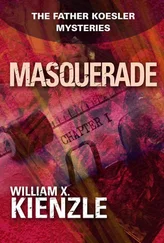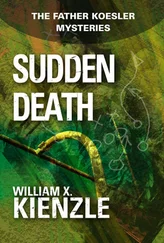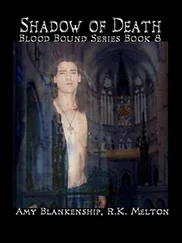“I can. But you’ll never make it. Begging your pardon, Father, but follow me.”
He pulled on his cap and led Father Koesler and Inspector Koznicki down O’Connell Street. Starting with the General Post Office Building, which was bombarded half to shreds during the Easter Uprising of 1916, their self-appointed guide gave them a running commentary on the historicity of nearly every building they passed . . . including the McDonald’s hamburger emporium.
2.
“Joe!” Pat Lennon admonished, “if we’re going to spend our declining years together in Sun City, you’re just going to have to remember to drive on the left side of the road.”
“Oh, yeah.” Cox eased the rented Toyota from the right to the left side of the road. “It’s hard enough getting used to a manual gearshift again—plus, it’s on the wrong side of the steering wheel—without having to remember to drive on the wrong side of the road. But you’re right: going over one of these hills on the right side of the road could lead to the closest encounter of the worst kind.”
“I love it!” Pat shrieked. “Because we in the States drive on the right side of the road, everybody who drives on the left drives on the ‘wrong’ side. Boy! Talk about your ugly American!”
They drove on in silence for a brief time, while Cox concentrated on a reversed style of driving.
“I can certainly see why they call this the Emerald Isle,” said Cox, glancing at the verdant fields and green shadings of the bogs.
“Wait till you get a look at the Burren to the south—or worse, at Connaught, up a bit north of here. It was Cromwell, that clone of Attila, who vowed to drive the Irish to hell or Connaught.”
Cox shook his head. “You are a source of constant amazement. How do you know so much about this place?”
“Well, for one thing, for such a small island, it has a fascinating history. It was known as the Land of Saints and Scholars and— watch it, Joe! We’re getting into Claregalway; there’s a thirty-mile speed limit up ahead.”
Cox touched the brake and slowed the car. They glided easily through the quiet streets, encountering hardly any traffic.
As they left Claregalway behind, they saw on the road ahead an elderly woman laboriously pedaling her bicycle uphill.
“Joe, pull over. Maybe she could use a lift.”
“But she’s got a bike.”
“Joe, there’s a rack on the roof. You can put the bike up there.”
“But—”
“Joe, she’s an old lady.”
“Right.”
They slowed to a stop several yards ahead of the cyclist. Lennon got out and turned to face the woman, who had slowed to a stop. “May we give you a lift?”
After some protestations that the trip had been made many times before and would be again, the woman finally allowed Cox to heft her light, well-worn bicycle atop the car. Then she climbed into the back and settled in as the journey resumed.
Pat turned to smile at the woman gently fanning herself in the back seat. “My name is Pat Lennon.”
“Oh, then, and mine would be Conlon, Mrs. Mary Ellen Conlon.” Eyes crinkling and face creasing into well-worn laugh lines, she returned Lennon’s smile. There was indeed, thought Pat, a world of truth in the old song about when Irish eyes are smiling. Mary Ellen Conlon must have been a real beauty as a young woman.
“And this,” Lennon indicated her companion, “is Joseph Cox. We’re newspaper reporters from Detroit, Michigan.”
“Ah, and that would be where they make all those automobiles, now, wouldn’t it?”
“Among a few other things, yes,” said Cox, keeping his eyes on the road.
Suddenly, doubt touched Mrs. Conlon’s face. “Lennon and Cox,” she repeated. “And were your people from England, then?”
Lennon chuckled. She wondered whether Mrs. Conlon had visions of being kidnapped by the English. “I’m afraid Joe has English ancestory, but Lennon is my married name. My maiden name was Cahill.”
Mrs. Conlon’s furrowed brow smoothed. The score read Irish-2, English-1.
It was Cox’s turn to chuckle. “Of course; why didn’t I think of it? No wonder you know so much about Irish history.”
“It’s a proud history, Mr. Cox.” Their passenger’s tone was at once defensive and assertive.
“I’m sure it is, Mrs. Conlon,” Cox replied. “We were just talking about Connaught and Cromwell.”
“Ah, the divil himself. He wanted to rid the world of the Irish, but we outlasted him, we did.”
“Not only him,” Lennon agreed, “but everyone and everything that, barring near miracles, should have destroyed the Irish.”
“You mean the Famine?” Cox asked.
“Oh, much more than the Famine—though that alone could have done it,” Lennon replied. “The first Celtic tribes came here a few centuries before Christ, and their battles among themselves might have become a sort of suicidal genocide. But, regardless, they enjoyed a golden age of their culture until the late eighth century. Despite all the wars and fighting, poetry and art flourished. And each of the Celtic kings kept a bard, a poet-in-residence, and of course each village had its seanachie, the storyteller who passed on the oral traditions of the people.
“Then came St. Patrick and Christianity, which produced a lot of scholars, saints, and missionaries.”
“And the Book of Kells,” Cox supplied.
“The Book of Kells,” Lennon agreed, “the illuminated manuscripts of the Gospels. But then the country was invaded by the Norsemen who, again, might have destroyed everything if it hadn’t been for the great king, Brian Boru.
“Boru broke the strength of the invaders at the Battle of Clontarf and established a peace that lasted 150 years, during which Ireland was free of all foreign influences.
“And then, along came Adrian IV.”
“The English Pope you mentioned on the plane?”
“The same: Nicholas Breakspear. He gave overlordship of Ireland to Henry II of England. After that, things went steadily downhill and continued in that direction for roughly 800 years.
“Gradually, the English took possession of the land and the Irish were lucky to have enough room for a hovel and a little earth in which to grow their precious potatoes.
“Then, when Henry VIII broke with the Church, he feared a Catholic invasion. So he stepped even harder on Catholic Ireland and established as his own the ‘Church of Ireland.’ Which didn’t daunt the Irish Catholics; it just drove the wedge between Ireland and England deeper.
“The Irish rebellion in the mid-seventeenth century was the one crushed by our genocidal friend Cromwell. It cost hundreds of thousands of Irish lives and, once again, nearly destroyed the race.”
At this point, Mrs. Conlon began to hum softly. Cox wasn’t sure, but he thought he caught a tune that sounded like “Wearin’ of the Green.”
“And on and on it went from uprising to uprising, until 1846 and 1847, when the potato crops failed. For the majority of the Irish, the potato was their sole source of nourishment. And, while the English did little to help, and even continued to export Irish produce to England, two million Irish men, women, and children starved to death over a two-year period, or died of disease brought on by starvation.
“Add to that all the Irish who fled on what came to be called ‘coffin ships’ to North America, and you’ve got to wonder how the Irish race survived!”
“But for the Grace of God!” Mrs. Conlon said, almost as a prayer.
“That’s about as complete a thumbnail sketch of a nation’s history as I’ve ever heard,” Cox commended.
“Once I get started on Ireland, it’s hard to stop.”
“We’re coming into Galway, Mrs. Conlon,” Cox announced needlessly, as signs were everywhere. “Is this as far as you go?”
Читать дальше
